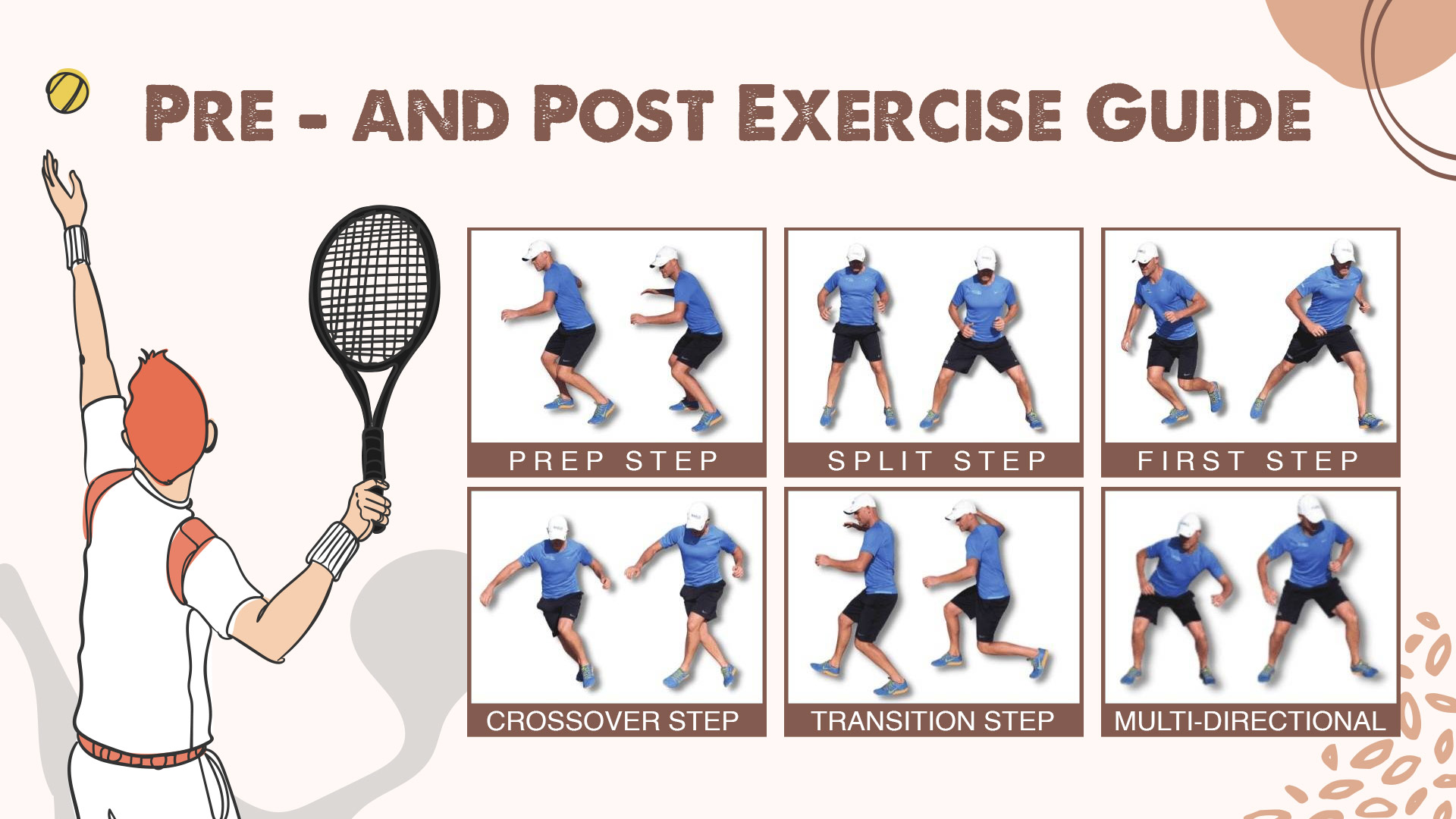Pre-Exercise Routine: Preparing Your Body for Action
Before stepping on the court, your body needs to warm up properly. A good warm-up increases blood flow, activates key muscles, and improves flexibility, helping you move better and react faster.
1. General Warm-Up (10-15 minutes)
Start with light exercises to gradually raise your heart rate and loosen up your muscles.
✅ Jogging or Jump Rope (5-10 minutes) – This increases body temperature and improves circulation.
✅ Dynamic Mobility Exercises (5 minutes) – Move your arms, legs, and torso to improve flexibility.
Arm circles (to loosen shoulders)
Hip rotations (for better movement)
Leg swings (for better balance)
2. Dynamic Stretching & Muscle Activation (10-15 minutes)
After warming up, do exercises that stretch your muscles while keeping them active. These help with quick footwork, explosive movements, and preventing injuries.
✅ Dynamic Stretches:
High knees (warms up legs and improves agility)
Lunges with torso twists (stretches legs and strengthens core)
Side shuffles (activates lateral movement muscles)
✅ Muscle Activation Drills:
Resistance band walks (strengthens hip and glute muscles)
Jump squats (for explosive power)
Quick footwork drills (ladder or cone drills for faster movement)
3. Sport-Specific Drills (10-15 minutes)
Now, prepare your body for actual tennis movements.
✅ Shadow strokes – Practice forehands, backhands, and serves without the ball to reinforce proper form.
✅ Quick sprints (5-10 meters) – Improves reaction speed.
✅ Hand-eye coordination drills – Bounce a ball against a wall and react quickly.
Post-Exercise Routine: Recovering & Preventing Injuries
After playing, your body needs proper recovery to reduce soreness and prepare for your next session. A cool-down routine helps muscles relax and prevents stiffness.
1. Cool-Down & Active Recovery (10-15 minutes)
✅ Slow jogging or walking (5-10 minutes) – Helps your heart rate return to normal.
✅ Deep breathing (2-3 minutes) – Helps relax your body and mind.
2. Static Stretching & Foam Rolling (10-15 minutes)
Stretching after exercise helps muscles recover and prevents stiffness.
✅ Key Stretches:
Hamstring stretch – Prevents leg tightness.
Hip flexor stretch – Reduces stiffness in the hips.
Shoulder and wrist stretches – Important for tennis swings.
✅ Foam Rolling:
Roll over tight muscles (legs, back, and shoulders) to relieve tension.
3. Rehydration & Nutrition (Within 30 Minutes Post-Exercise)
Your body needs fuel to recover properly.
✅ Drink Water & Electrolytes – Replenish fluids lost through sweating.
✅ Eat a Balanced Meal:
Protein (20-30g): Helps repair muscles (e.g., eggs, chicken, protein shakes).
Carbohydrates: Restores energy (e.g., fruits, whole grains).
Healthy Fats: Aids recovery (e.g., nuts, avocados).
4. Recovery Techniques (Optional but Helpful!)
✅ Ice Baths or Cold Showers – Reduces muscle soreness.
✅ Massage or Foam Rolling – Helps with muscle relaxation.
✅ Good Sleep (7-9 hours) – Essential for full-body recovery.
Final Thoughts
Following a proper warm-up and cool-down routine will make a huge difference in your performance and overall health. By preparing your body before exercise and helping it recover afterward, you can play better, reduce injury risk, and stay on the court longer.
Whether you're a beginner or an advanced player, these steps will help you maximize your tennis potential! ????????













Comments